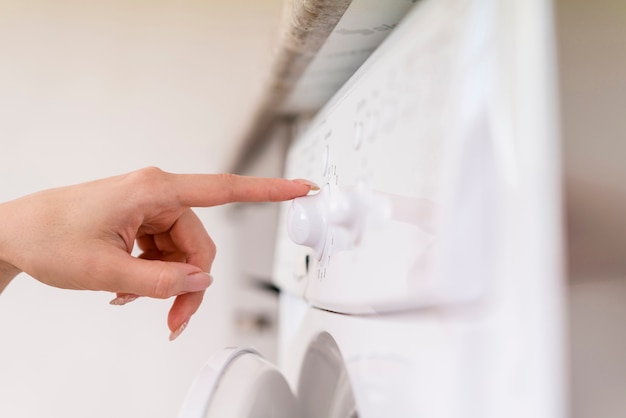Most home appliances used in households today are incredibly sophisticated, like smartphones and computers. Appliances like washing machines are equipped with sensors that detect water levels, air pressure, etc.
So, you may wonder how does a washing machine water level sensor work? It is an incredibly useful feature in washing machines.
Let’s discover more about it!

How Does a Washing Machine Water Level Sensor Work?
A washing machine water level sensor is a vital component that ensures the proper amount of water is used during each wash cycle. Typically, it operates using a pressure switch mechanism.
Inside the washing machine, there is an air chamber connected to the water chamber. As the water level increases, air pressure in the chamber rises accordingly.
The pressure switch consists of a diaphragm that responds to the air pressure changes. When the water reaches the desired level, the diaphragm triggers a switch, signaling the control board to stop the water inlet valve.
Conversely, if the water level is too low, the pressure switch will initiate the water inlet valve to add more water.
This system ensures the washing machine uses the appropriate amount of water, preventing overflows and water wastage while ensuring efficient cleaning.
It is a crucial component that optimizes the washing process and promotes water conservation.
Washing Machines Control the Water Levels
The water level sensor identifies when the water levels during the wash cycles fall below the minimum or rise above the maximum level. The water sensor also prevents leaks from your washing machine.
When a wash cycle requires filling the tub, the water level sensor transfers power from the timer control to the water input valve and the temperature switch.
The switch turns off the water flow as the tub fills up when the water level corresponds to the preset for a large, regular, or small load. After that, the water sensor instructs the motor to start agitating.
The location of the water level switch varies from machine to machine; in many cases, it is located inside the control panel, but consult your manual to learn where yours is.
The rubber tube that extends from the water level switch down the tub’s edge sets it apart from other spherical switches inside the washer cabinet.
Water enters the washing machine from the bottom, increasing pressure inside the tube as it fills. The switch stops the water from flowing into the tub when the pressure reaches a certain level.
The water level sensor
Your washing machine has a plastic tube connected to the control console, which runs from it down to the outer tub. Both the tub and tube are filled with water at the same time.
When the water in the tube rises, the air in it gets compressed, increasing the pressure in the tube, which presses on a piston in the control console. This allows the water sensor to automatically stop the water from flowing into the tub.
Read more: Do Washing Machines Work Without Water?

Issues With the Water Level Sensor
If you notice any issues with your water level sensor, you may need to inspect what is causing them. Examine the water level tube and remove any obstructions.
Before performing any maintenance or repairs on your washing machine, always unplug it from its power socket.
- Examine the tubing that runs from the water level switch’s base to the tub’s base. It needs to be tightly attached to fittings on both ends.
- Remove the tube’s ends from the fittings to which they are connected.
- Check for sediment and water at both ends of the detached tube.
- Look for holes in the tube. If there are any issues, you can replace the tube.
- If you notice any junk inside the tube, remove and clean it. A thorough cleaning may be required to fix your water level sensor.
Washing Machines as Part of Smart Homes
With the increase in interest among people in creating smart homes, they want all of their devices and appliances to be connected, including washing machines.
This means the interest in these types of machines is ramping up, and according to statistics, smart home penetration is expected to reach up to 19.5% by the end of 2022.
While washing machine revenue, according to research, amounts to 69.41 billion dollars in 2022. The market is expected to grow by 5.12% between 2022 and 2027.
Also read: Do I Need Water Hammer Arrestor For Washing Machine?
Conclusion
So, how does a washing machine water level sensor work? You could have read how it works. The water sensor helps keep your water levels from getting too high or low during your wash cycles.
As I mentioned, if you notice that your water level sensor is not working properly, there is likely a blockage in the water tube that you can remove.







